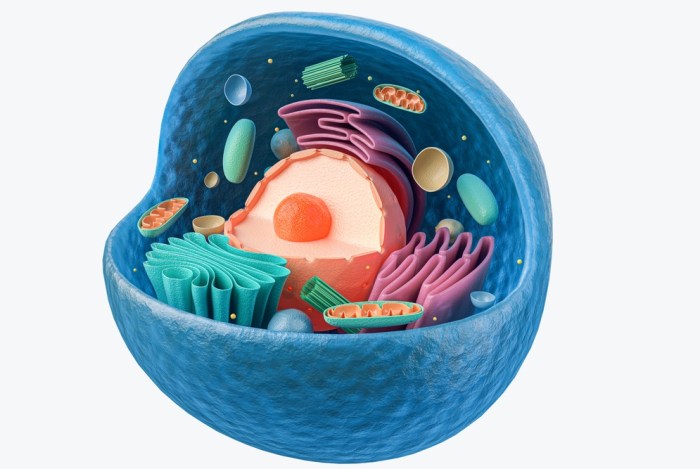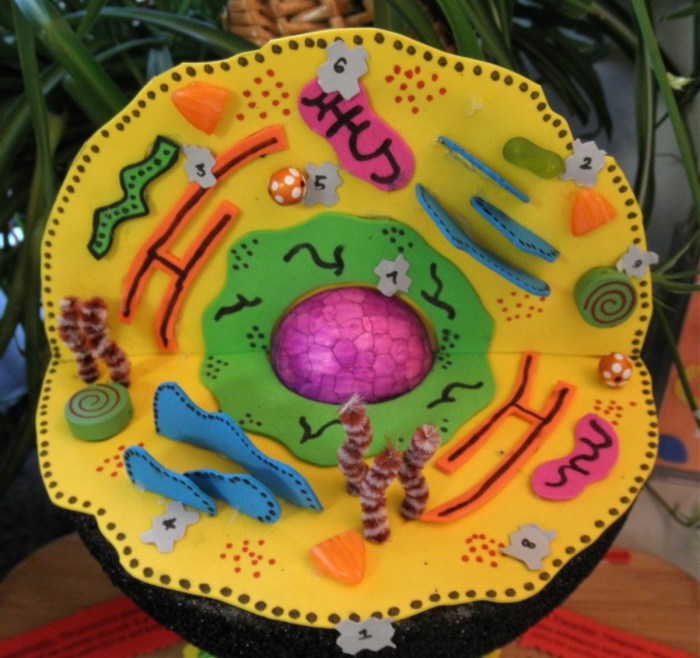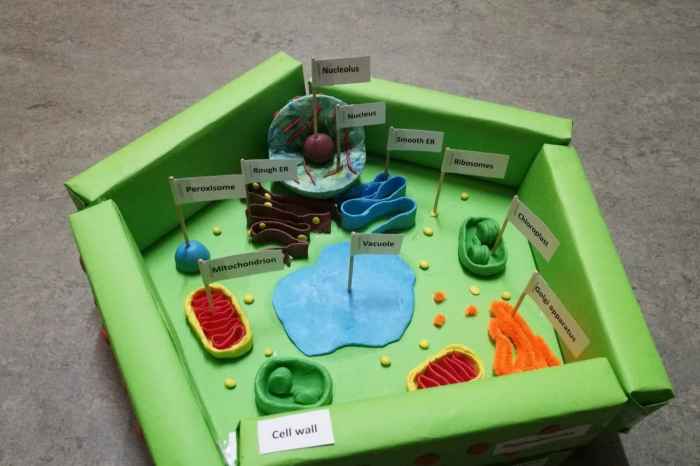Cell Model 3D is more than just a fancy new tool in biological research; it’s a game-changer. Imagine being able to study human cells in a way that mimics their natural environment, allowing us to unlock secrets about diseases and develop personalized treatments.
This is the promise of 3D cell models, a technology that’s rapidly changing the landscape of scientific discovery.
Traditional 2D cell cultures, where cells are grown in flat dishes, have served us well, but they lack the complexity of real tissues. 3D cell models, on the other hand, offer a more realistic representation of the human body. They allow us to study cells in a 3D environment, complete with intricate structures and interactions, bringing us closer than ever to understanding the complexities of life.
Introduction to 3D Cell Models
Imagine a world where scientists can study human diseases and develop new drugs using miniature, living replicas of organs. This isn’t science fiction; it’s the exciting reality of 3D cell models, a revolutionary technology transforming biological research.
3D cell models offer a significant leap forward compared to traditional 2D cell culture models, which are essentially flat layers of cells grown on a surface. While 2D models have been instrumental in scientific advancements, they lack the complexity and physiological relevance of real tissues.
3D cell models, on the other hand, mimic the intricate three-dimensional architecture and microenvironment of living tissues, providing a more realistic platform for studying cell behavior and disease processes.
Types of 3D Cell Models
The world of 3D cell models is diverse, with various techniques used to create these miniature replicas of tissues. Some of the most common types include:
- Spheroids:These are three-dimensional aggregates of cells that self-assemble into spherical structures, mimicking the organization of cells in tissues.
- Organoids:These are more complex 3D structures that resemble specific organs, such as the liver, kidney, or brain. Organoids are often created using stem cells, which have the potential to differentiate into various cell types.
- Microfluidic Devices:These are tiny chips that create controlled microenvironments for cells to grow and interact. Microfluidic devices allow for precise control over factors such as nutrient flow, oxygen levels, and cell-cell interactions, providing a highly realistic and customizable platform for studying cells.
Applications of 3D Cell Models
3D cell models are revolutionizing various fields, from drug discovery to personalized medicine. Their ability to mimic the complexity of living tissues opens up new avenues for understanding disease mechanisms and developing innovative therapies.
Drug Discovery and Development
3D cell models are proving invaluable in drug discovery and development. By testing drugs on these miniature tissues, researchers can assess their efficacy and toxicity more accurately than with traditional 2D models. This allows for more efficient drug screening and reduces the risk of unforeseen side effects in clinical trials.
Studying Disease Mechanisms
3D cell models provide a powerful tool for studying disease mechanisms. By creating models of specific tissues affected by a disease, researchers can investigate how cells behave under disease conditions and identify potential targets for therapeutic intervention.
Personalized Medicine
3D cell models hold immense potential for personalized medicine. By creating patient-specific models using cells derived from an individual, researchers can tailor treatment plans based on a patient’s unique genetic and biological makeup. This approach could lead to more effective and personalized therapies.
Techniques for Creating 3D Cell Models: Cell Model 3d
Creating 3D cell models requires specialized techniques that allow cells to self-assemble or be guided into three-dimensional structures. Each technique has its advantages and disadvantages, making it suitable for different applications.
Methods for Creating 3D Cell Models

| Method | Advantages | Disadvantages | Applications |
|---|---|---|---|
| Spheroid Formation | Simple and cost-effective; allows for high-throughput screening | Limited control over cell organization; may not fully mimic tissue complexity | Drug screening, toxicity testing, cancer research |
| Organoid Culture | High physiological relevance; allows for studying organ-specific functions | Complex and time-consuming; may require specialized expertise | Disease modeling, drug development, regenerative medicine |
| Microfluidic Devices | Precise control over microenvironment; allows for studying dynamic cell interactions | Expensive and requires specialized equipment; limited scalability | Drug delivery, cell migration studies, tissue engineering |
| Bioprinting | Precise control over cell arrangement; allows for creating complex tissues | Limited availability of biocompatible materials; requires specialized equipment | Tissue engineering, regenerative medicine, drug screening |
Advantages of 3D Cell Models
3D cell models offer several advantages over traditional 2D cell culture models, making them a valuable tool for biological research.
Increased Physiological Relevance
3D cell models provide a more realistic representation of living tissues, mimicking their three-dimensional architecture, cell-cell interactions, and microenvironment. This increased physiological relevance leads to more accurate and reliable results, particularly in drug discovery and disease modeling.
Improved Predictive Power
The ability of 3D cell models to mimic the complexity of living tissues translates to improved predictive power. Studies using 3D models have shown a stronger correlation with in vivo results compared to traditional 2D models, making them a more reliable tool for predicting drug efficacy and toxicity.
Challenges and Future Directions
Despite their significant advantages, 3D cell models face several challenges that need to be addressed to fully realize their potential.
Challenges in 3D Cell Model Development, Cell model 3d

- Standardization:Lack of standardized protocols for creating and characterizing 3D cell models can lead to inconsistencies between different labs.
- Scalability:Scaling up 3D cell model production for large-scale drug screening or personalized medicine applications can be challenging.
- Cost:Developing and maintaining 3D cell models can be expensive, limiting their accessibility to some research groups.
Future Directions in 3D Cell Modeling
- Developing more sophisticated models:Researchers are continuously working to create more complex and realistic 3D cell models, incorporating factors such as immune cell interactions and vascularization.
- Improving scalability and affordability:Efforts are underway to develop more efficient and cost-effective methods for creating and maintaining 3D cell models.
- Integrating 3D cell models with other technologies:Combining 3D cell models with other technologies, such as microfluidics, bioprinting, and artificial intelligence, holds immense potential for advancing research.
Visualizing 3D Cell Models
Visualizing the intricate three-dimensional structures of 3D cell models requires advanced microscopy and imaging techniques. These techniques allow researchers to capture detailed images of cells and tissues, providing valuable insights into their organization and function.
Microscopy and Imaging Techniques
- Confocal Microscopy:This technique uses lasers to scan a specimen, creating high-resolution images of thin optical sections. Confocal microscopy is particularly useful for visualizing the internal structures of 3D cell models.
- Light Sheet Microscopy:This technique uses a thin sheet of light to illuminate a specimen, minimizing phototoxicity and allowing for high-speed imaging of thick samples. Light sheet microscopy is ideal for capturing the overall structure of 3D cell models.
- Electron Microscopy:This technique uses electrons to create images of specimens, providing ultra-high resolution and detailed information about cell structures. Electron microscopy is essential for visualizing the fine details of 3D cell models.
Images of 3D Cell Models
| Image | Description |
|---|---|
| [Image of a spheroid] | A spheroid of breast cancer cells, showing the characteristic spherical structure and cell-cell interactions. |
| [Image of an organoid] | An intestinal organoid, displaying the complex architecture of intestinal crypts and villi. |
| [Image of a microfluidic device] | A microfluidic device containing a 3D cell model of a tumor, allowing for controlled drug delivery and analysis of cell behavior. |
3D Cell Model Software and Tools
A wide range of software and tools are available for creating, analyzing, and visualizing 3D cell models. These tools empower researchers to extract valuable insights from these complex structures.
Software for 3D Cell Model Creation and Analysis
- CellProfiler:This open-source software package provides tools for image analysis, cell segmentation, and quantification of 3D cell models.
- Imaris:This commercial software offers advanced visualization and analysis capabilities for 3D image data, including tracking cell movement and interactions.
- Amira:This software provides a comprehensive suite of tools for 3D visualization, segmentation, and analysis of complex biological structures.
Resources and Tutorials
Numerous online resources and tutorials are available to help researchers learn how to use these software tools effectively. Websites like the National Institutes of Health (NIH) and the National Center for Biotechnology Information (NCBI) provide valuable information and training materials.
Ethical Considerations
The use of 3D cell models in research raises important ethical considerations, particularly when using human cells and tissues.
Ethical Implications of Using Human Cells
- Informed consent:Researchers must obtain informed consent from individuals donating cells or tissues for use in 3D cell models.
- Privacy and confidentiality:Researchers must ensure the privacy and confidentiality of patient data and genetic information.
- Animal welfare:If animal cells are used in 3D cell models, researchers must adhere to ethical guidelines for animal research.
Importance of Responsible Research Practices
It is crucial to conduct research using 3D cell models responsibly and ethically. This includes adhering to ethical guidelines, ensuring informed consent, and minimizing potential risks to individuals and animals.
Concluding Remarks

From drug discovery to disease modeling, the applications of 3D cell models are vast and exciting. As we continue to refine these technologies, we’re opening doors to a future where personalized medicine is a reality, and the fight against diseases is waged on a whole new level.
3D cell models aren’t just a scientific advancement; they’re a beacon of hope for a healthier future.
FAQ Resource
How are 3D cell models created?
3D cell models are created using various techniques, including bioprinting, microfluidic devices, and self-assembly methods. These methods allow researchers to create 3D structures that mimic the complexity of real tissues.
What are the limitations of 3D cell models?
While 3D cell models offer a significant improvement over 2D cultures, they still have limitations. For example, they may not fully capture the complexity of the human body’s microenvironment, and they can be expensive to produce.
What are some examples of 3D cell model applications?
3D cell models are used in a wide range of applications, including drug screening, toxicology testing, disease modeling, and regenerative medicine.